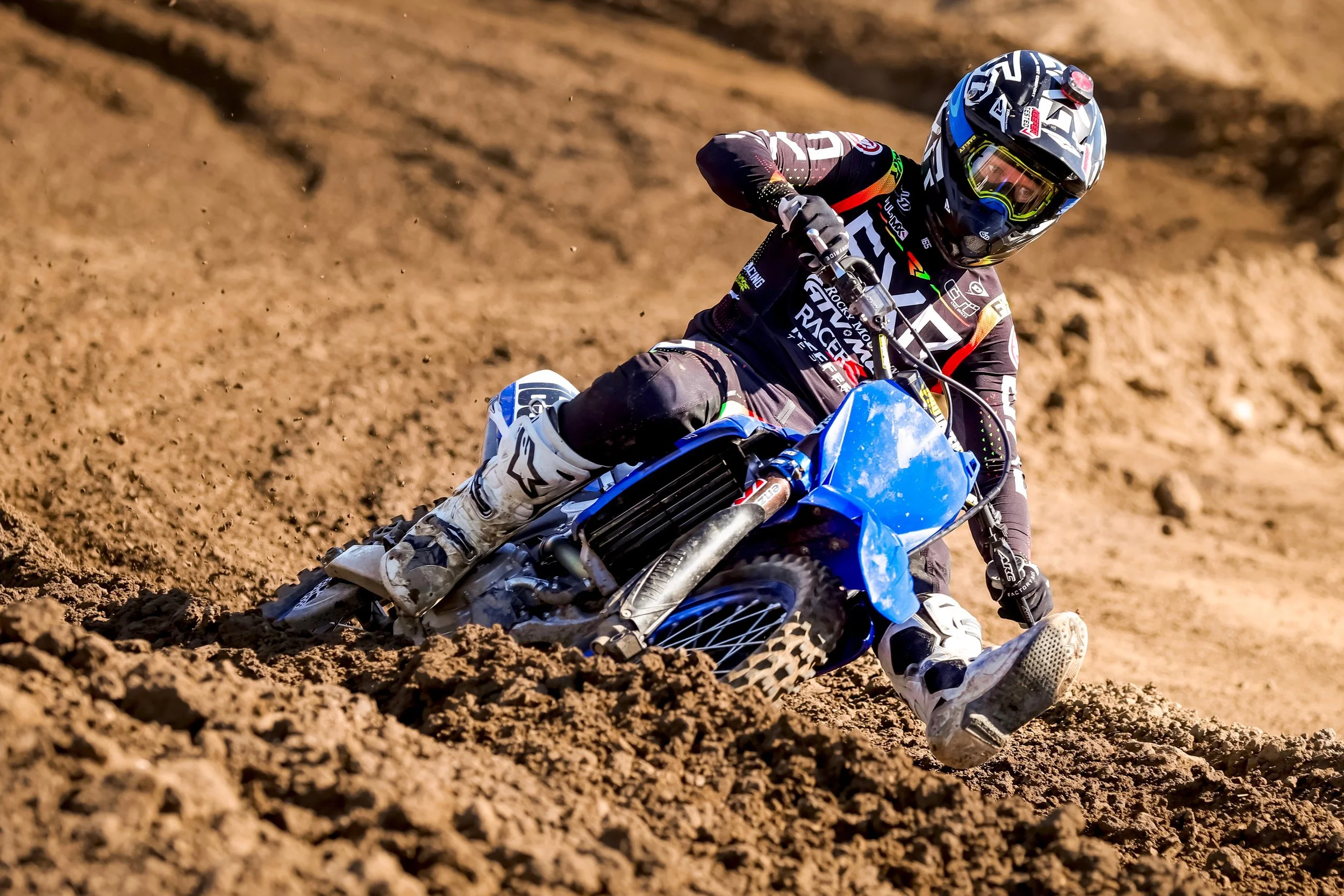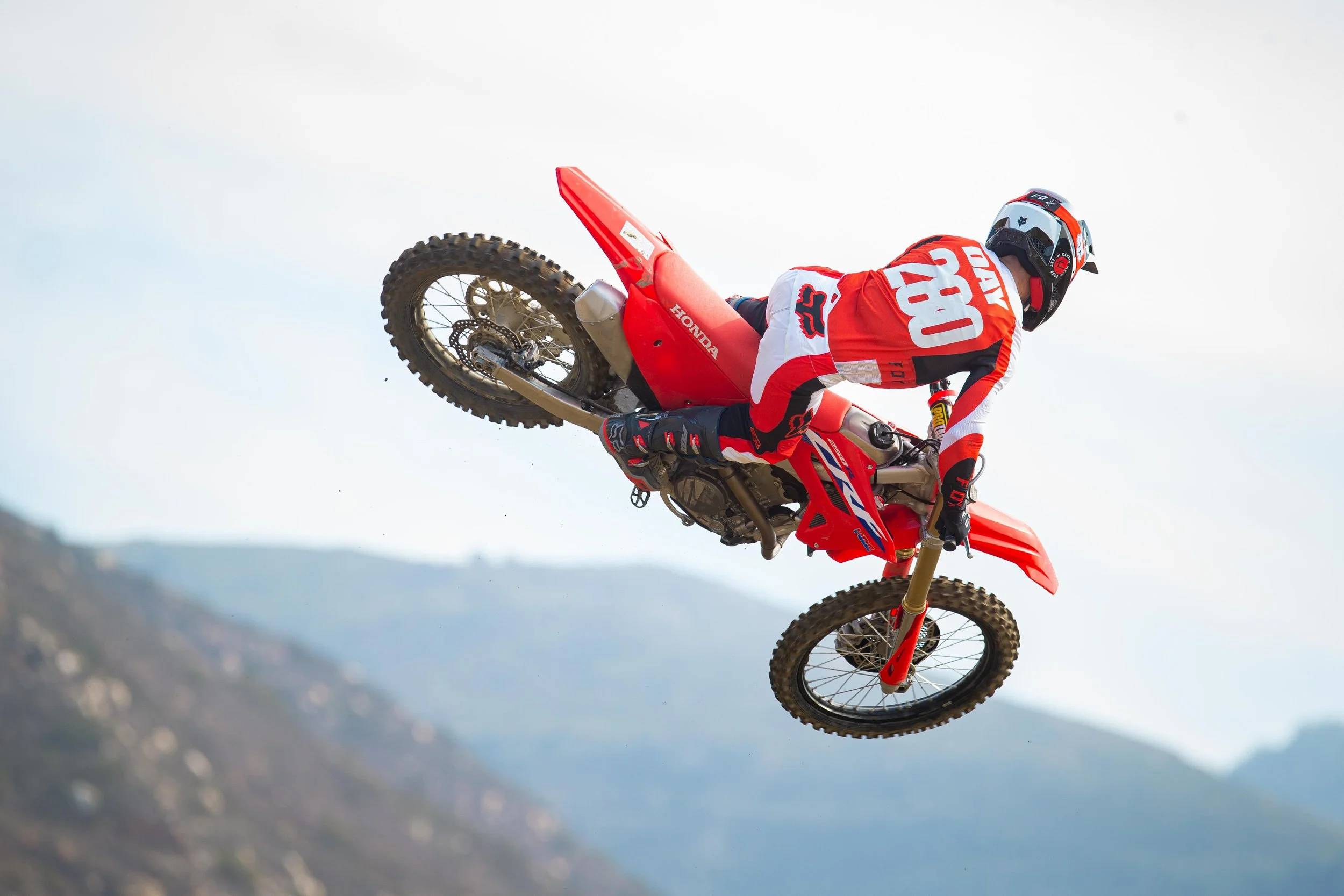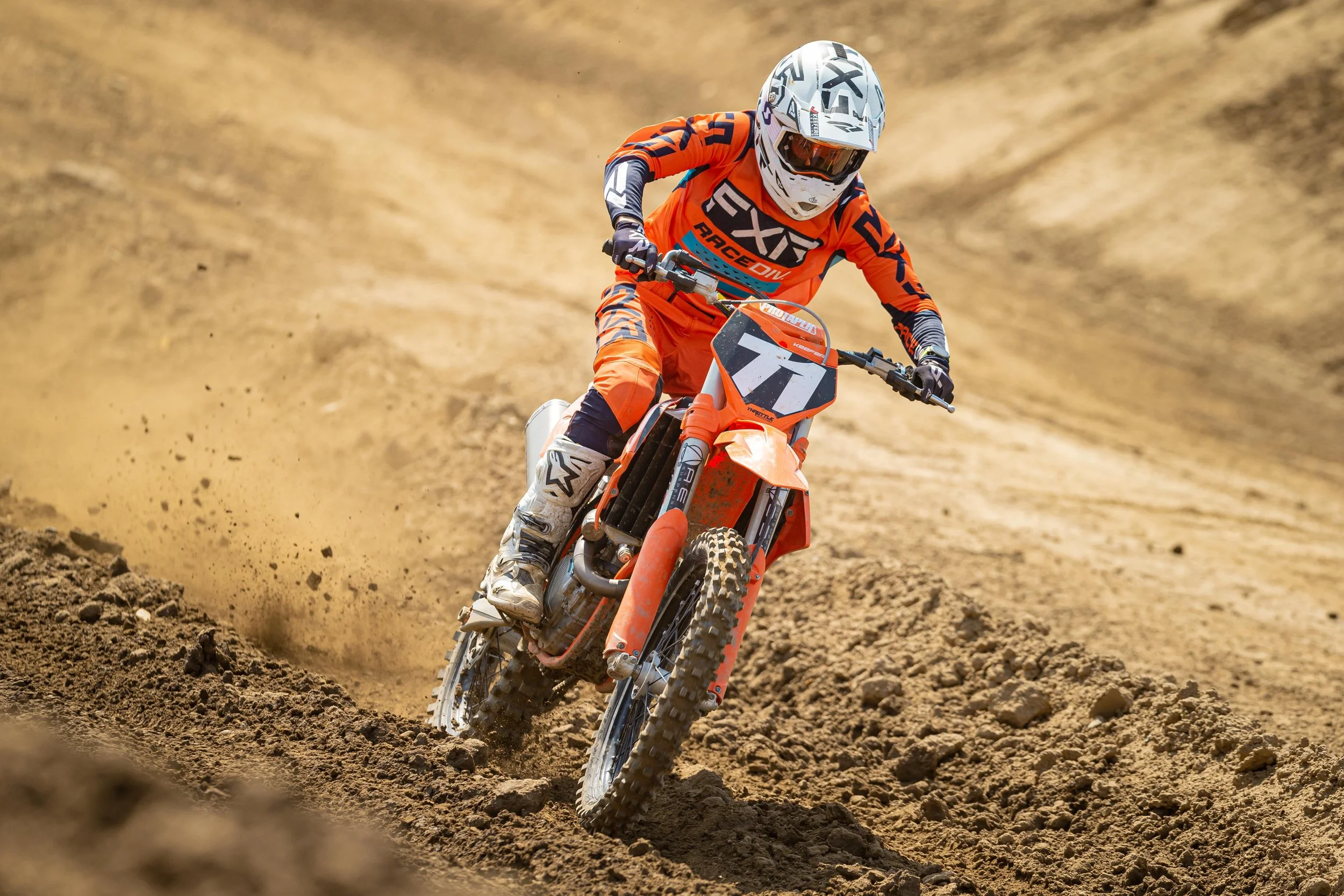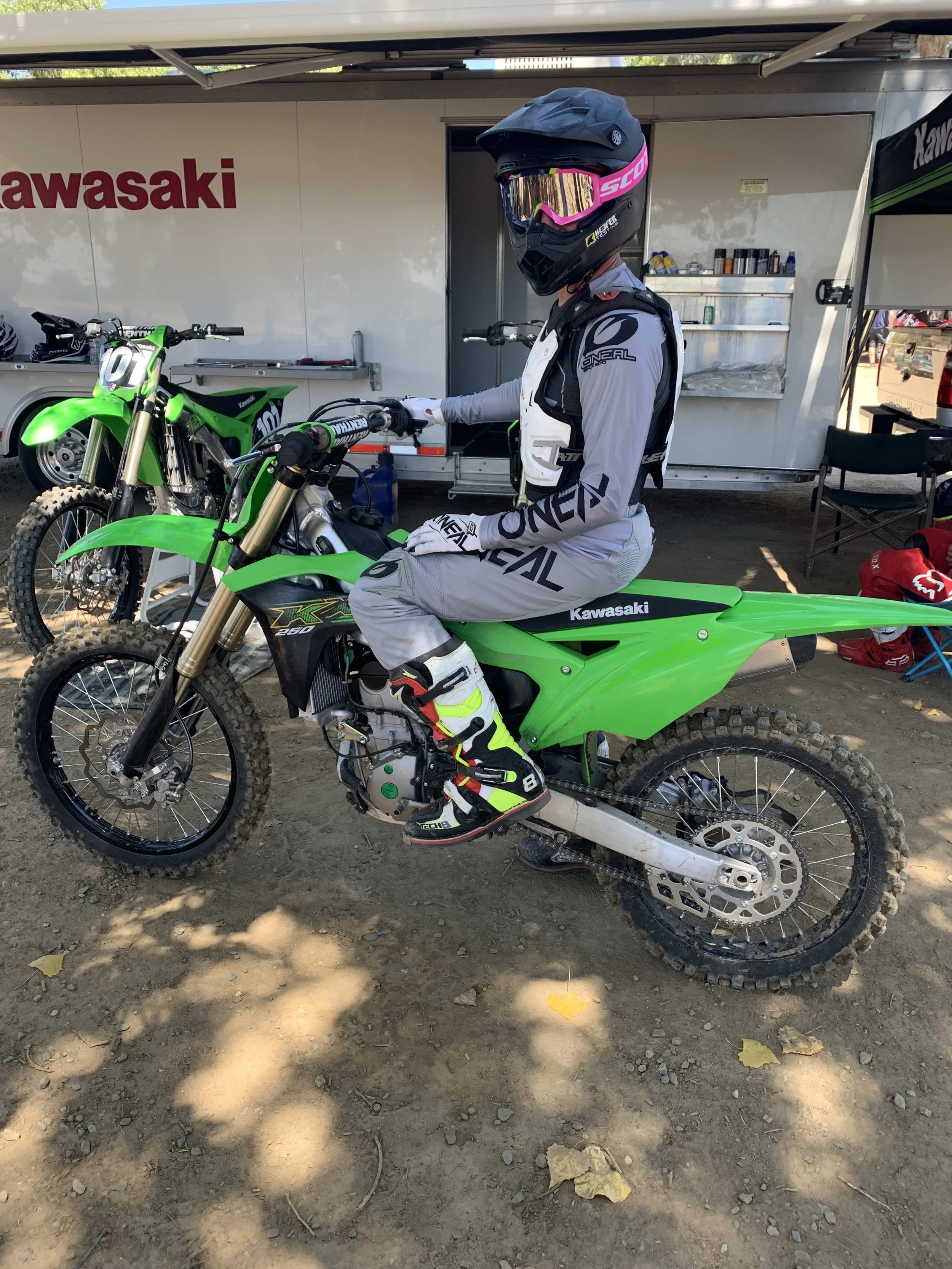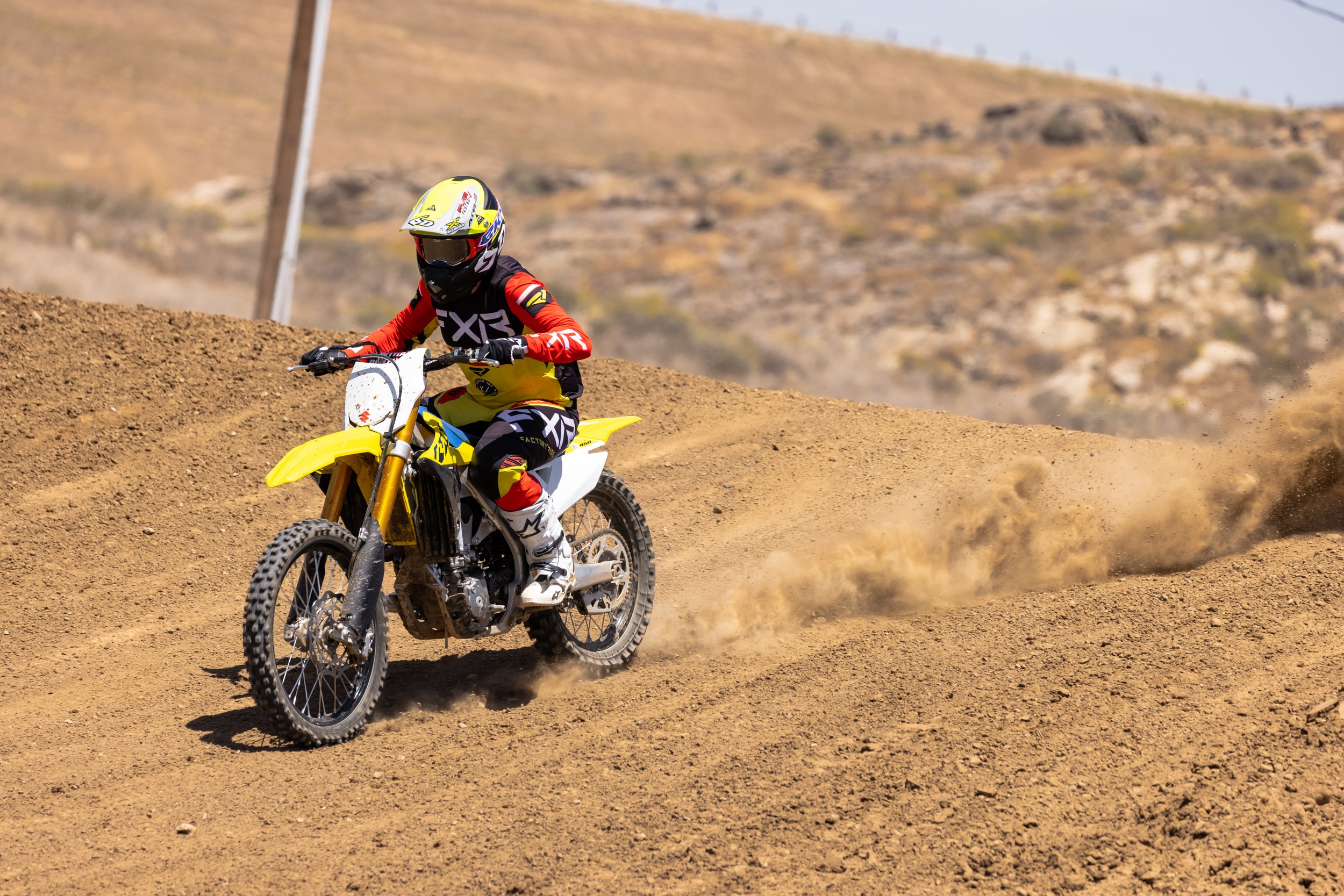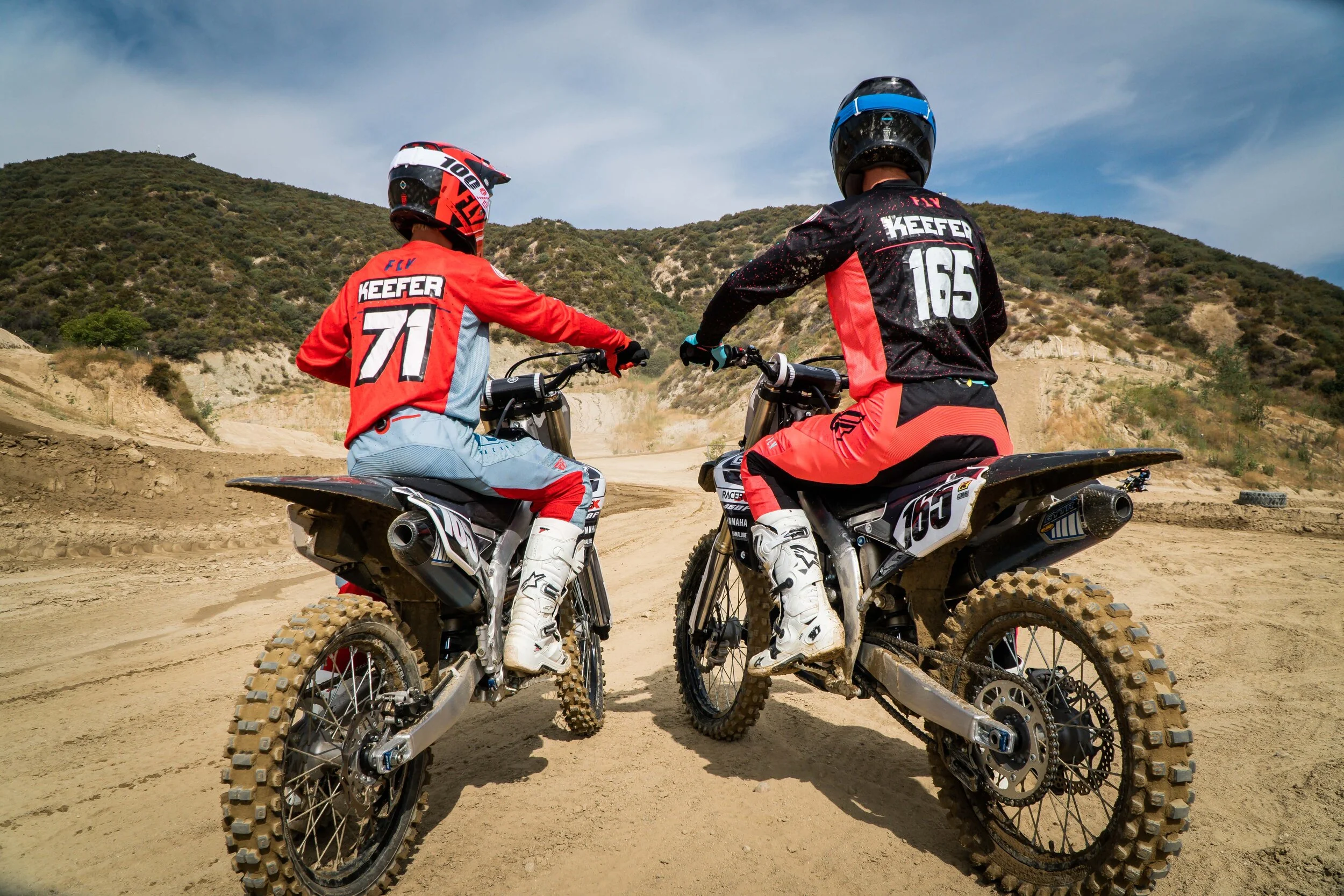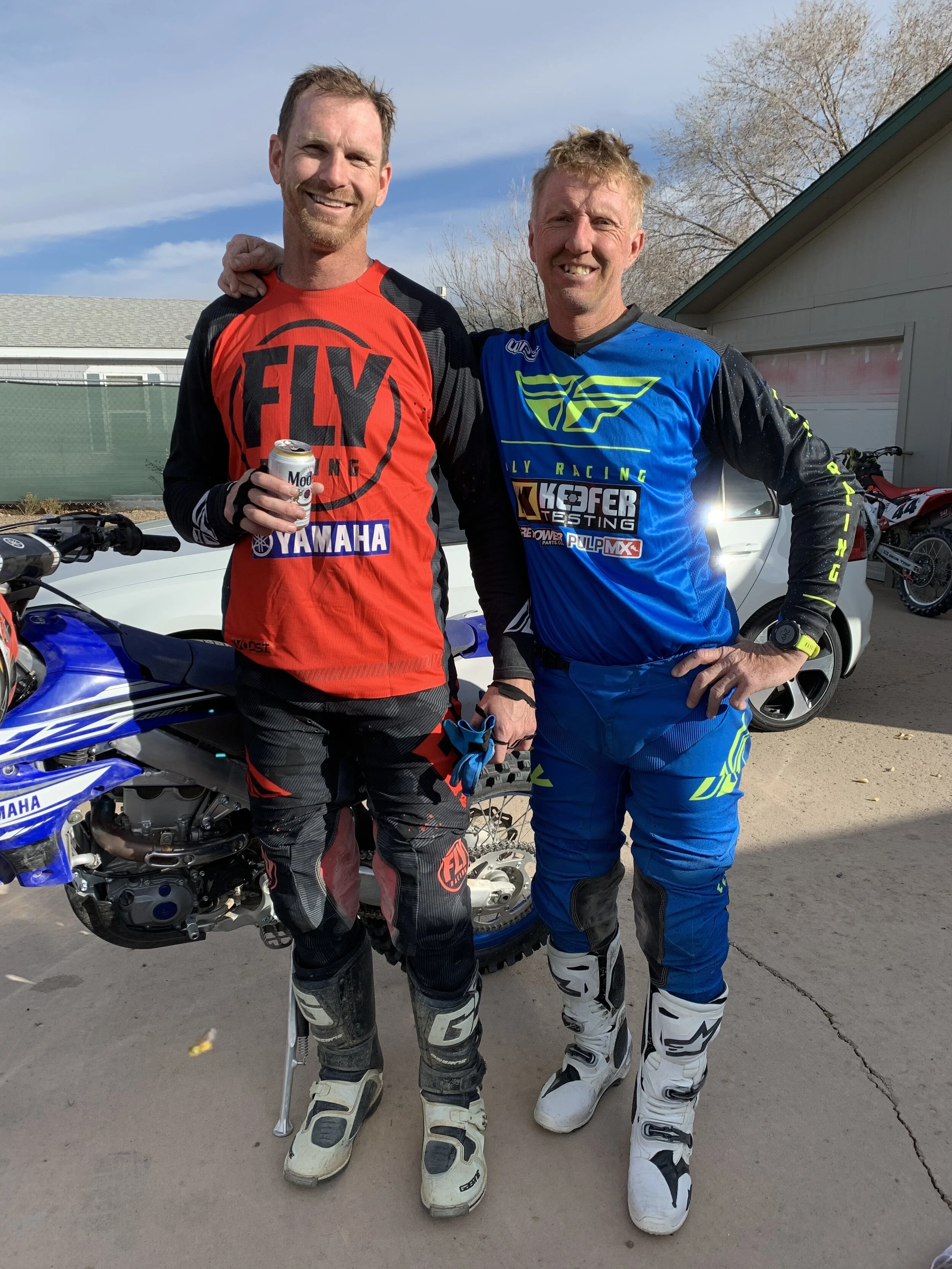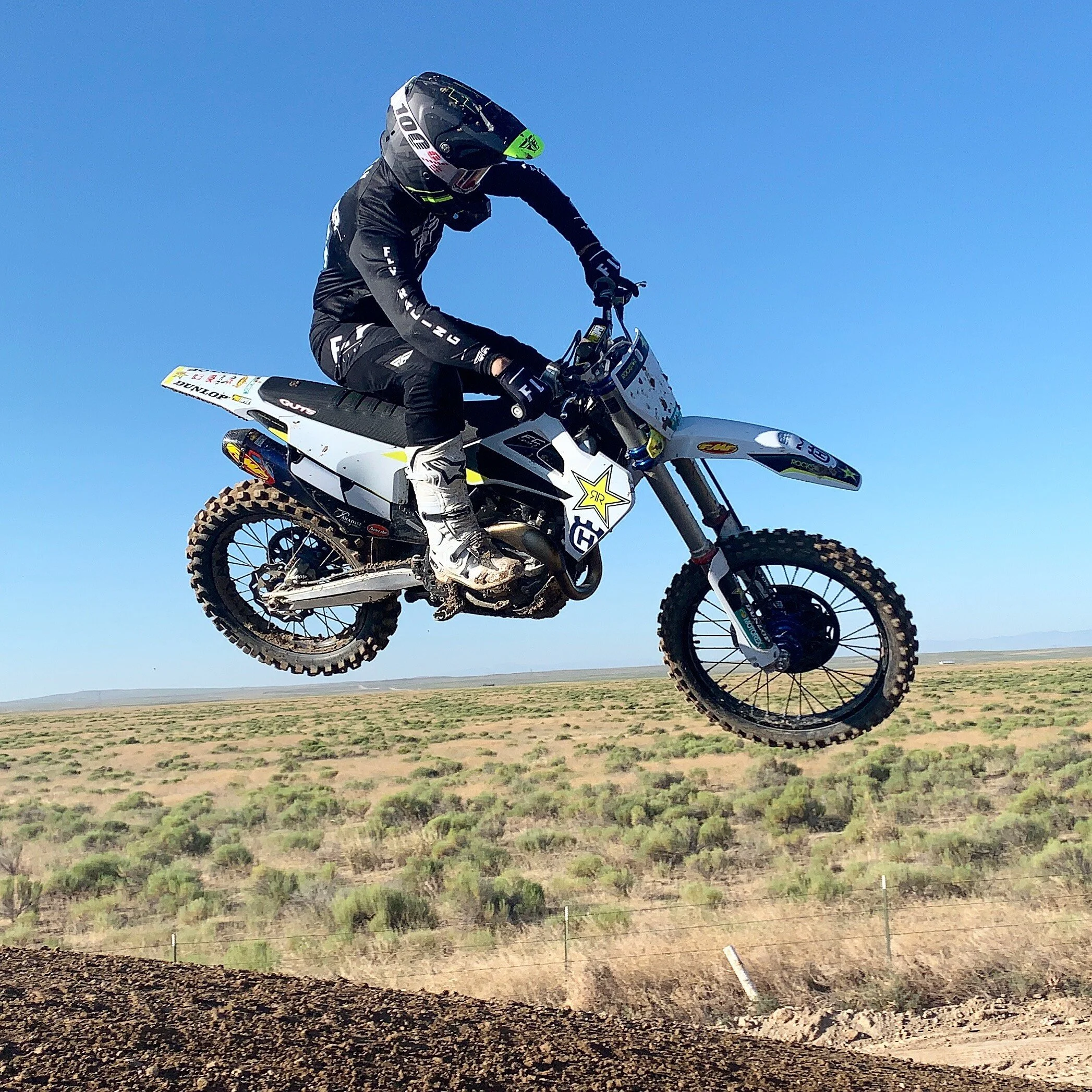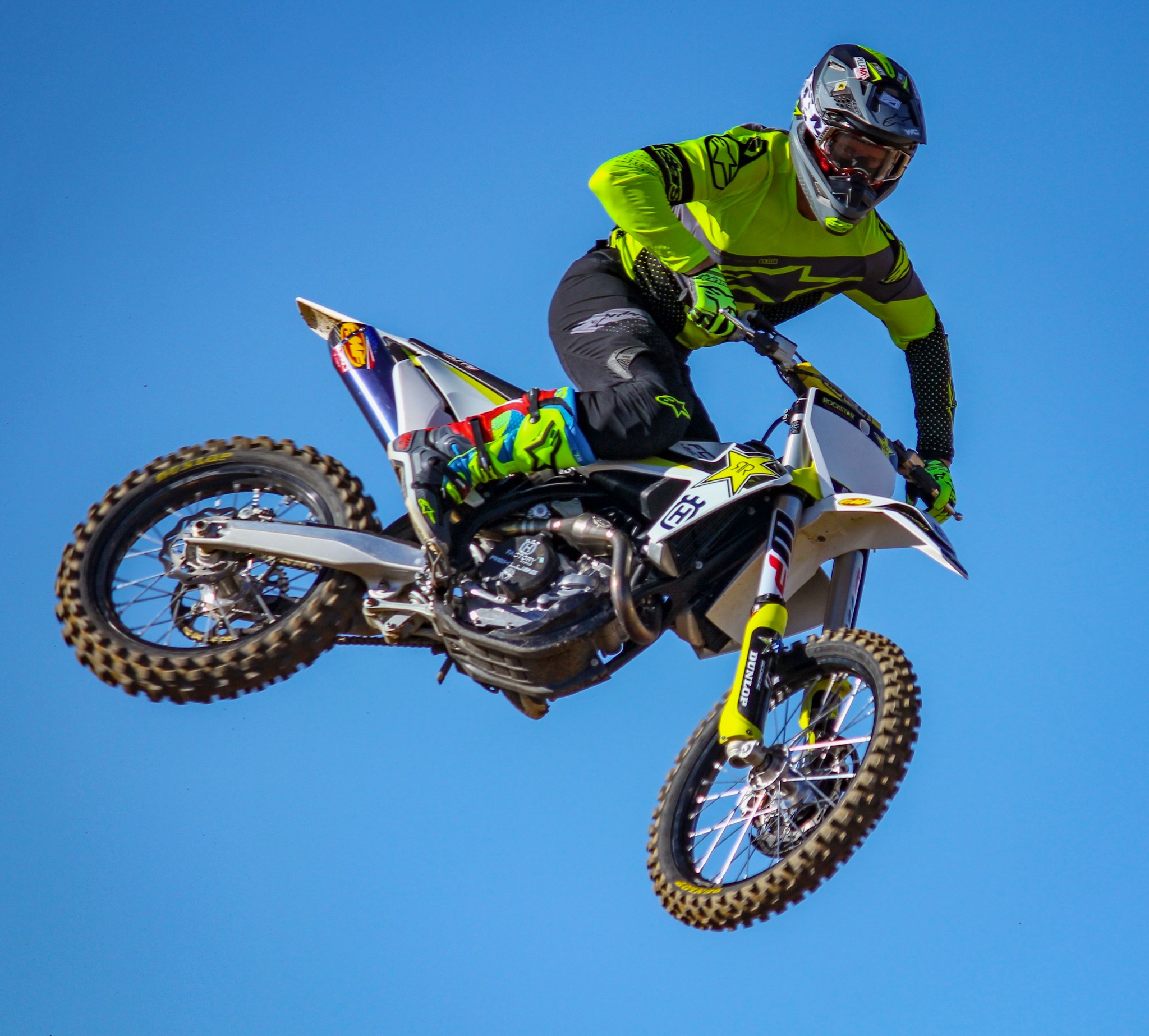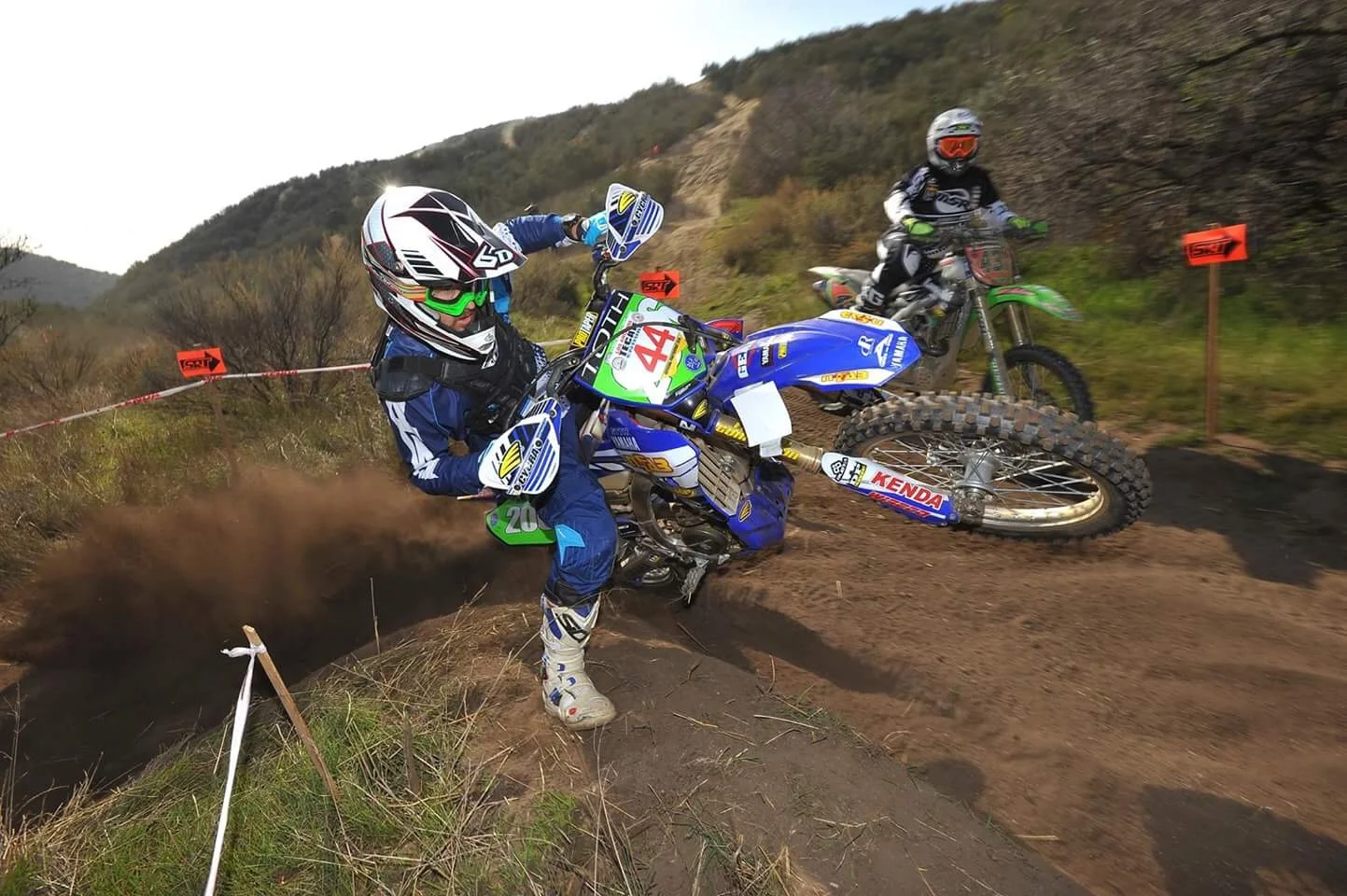“Keefer, I want to be a test rider”. Of course you do, but do you know what you have to do once off the bike? Do you know what the correct way to do things when you’re on the bike testing? I hear this statement all the time, but I end up asking these questions above every single time I get asked. To me I don’t think a lot of people understand the ins and outs of testing. From the outside, a gig testing for Keefer Inc. or any other motocross media outlet appears to be one of the best jobs in the industry and it is! Where else do you get to ride the latest bikes, sometimes on private tracks while wearing new, free riding gear? Yet, despite all the apparent perks, being a test rider is actually a tough job that requires dedication, being a good person, persistence, honest and more than a little luck. The purpose of this article is to fill you in on some of the false notions surrounding the gig of being a test rider and to tell you how to become one, if that is, what you are looking to do.
Falsehoods That Surround Being A Test Rider:
There are several components of being a test rider that aren’t exactly understood by those trying to get this type of job. Here are some things that I put together that you all may think happens in the testing world, but are simply just falsehoods.
Fiction: Testing is easy work. While you may think that bike tests involves simply cruising out to the track, hitting kickers and getting free shit, you couldn’t be more delusional. Testing is hard work and those that do it right, do a lot of it! Most of my test days begin early in the morning to take advantage of the quiet time I have at home to type and typically don’t finish a testing day until the evening. Don’t get me wrong, it is fun, but becomes more like a real job the more you do it. The toughest thing about being a test rider would have to be the long days I put in at the track and only to return home to start typing an article. I am mentally fried by the time I am ready to hit the sack. Sorry Mrs. Keefer, you’re not getting any tonight! To evaluate a motorcycle in a comparison situation you have to make sure you give equal time for each bike, and that could be up to six motorcycles at times! So, it is definitely a full day. Your body is tired at the end of the day right up to that last bike you get on, but you have to make sure you’re in the right frame of mind (and in shape) when you are testing at 5:30 in the evening. You have to make sure you are fair and not in a rush to leave the track just because you’re tired. Being in shape is sometimes over looked with other test riders. I take pride that I try to stay in as good as physical shape as I can be for a 40 sotting year old. You’re only going to ride as much as your body allows so having this base of all these years riding has helped.
Fiction: Test riders get paid a lot of money. Believe it or not, I don’t pay my test riders (I only have a couple) a whole hell of a lot for their services. While this may seem unfair, consider the flip side: My test guy gets to ride the latest bikes, gets parts and gear to test and keep. Your hobby is work, but at least you don’t have to pay for your hobby. Not only that, but they end up getting a lot of time on each bike, which makes it a great gig for aspiring pros or those who desire a lot of training. When I started at Dirt Rider years ago, I got paid nothing for years until a check showed up for a couple hundred bucks after a shootout. I had to put in my time and pay my dues in order just to get a couple hundred dollars. When you test for a manufacturer (think durability testing) you will get a set amount per day, but it is usually only a couple hundred bucks per day for a 12-14 hour day.
Fiction: You have to be fast or a pro to be a test rider. Being a high-level racer type certainly makes someone a good test rider on paper, but this isn’t always the case when it comes to track time. Many pros are very adept at gauging what is going on with their equipment; conversely, some pros can’t even tell if they have a flat rear tire. Trust me, I have seen it! Speed is not directly related to having a good sense of what a bike is doing and as such I try to use riders of every skill level. When I test for manufacturers I have to be conscientious of the fact that these bikes need to perform for a wide variety of riders, not just what I like. When doing stuff for Keefer Inc. shootouts I have multiple opinions in which helps broaden the evaluations I bring to readers, since not everyone out there is a Supercross Pro. This is also why you’ll see mid forty year old, blue collar guys testing in my 450cc shootout alongside 240 pound weekend warriors, not just 170 pound fast guys; diversity only enhances the value of testing.
Fiction: Test riders get to roach out bikes. While I can’t say the same for other testing sites, there is no denying that I ride a lot and spend almost as much time in my garage as I do on the track. Why? Because I adhere to one simple rule that my dad preached to me when I was young: treat anything you ride as if it was your own. One look around my garage and you will find clean bikes, lubed chains, fresh filters and fresh engine oil in the machines. I take great care to not only keep the test bikes in solid shape, but also to know what makes them tick and this transfers into getting the correct feedback to you all. On the track or on the trails, I encourage my test guys to ride a bike to its full potential, but this in no way includes thrashing it. All of the manufacturers are great dudes and if I trash a bike and give it back to them like that, I would feel like shit.
So now that I brought up some common myths about test riding, how the hell do you become a test rider?
Be Persistent And Available:
If you really want to test rider, the first thing you need to do is to make yourself available. Like “I don’t have a life” accessible and on short notice. I usually like to get the information out to the people ASAP, so I often have to plan test sessions without much warning. As a result the guys I have used earned their test riding moments by simply being in the right place at the right time. I have literally talked to riders at the track and I could tell by just the way they treat their bike, how they ride and what type of attitude they have, offered them to try out test bikes. I am a huge people person and can tell a lot about someone by just talking to them. Some of those guys came off articulate when it comes to explaining how a certain bike performs on the track. Sometimes being lucky and in the right place at the right time helps. This isn’t a slam dunk and doesn’t mean that you’re going to be a test rider, but it helps to have a good presence at the track. Say hi to people at the track and look like you’re enjoying yourself instead of hiding out in your van all day, like I am guilty of at time. Ehhhhhh…
Knowledge Of Dirt Bikes:
Please for the love of all that is holy know which way to turn a clicker to speed up the rebound? What does a bike do if the mapping is off? How does the bike react if the sag is set wrong? Do you know what sag is? Or shit, did you even check your sag?These questions-and more like them-all need to be answered by a test rider before getting the job. No one is looking for super freaks when it comes to bike knowledge, but a test rider needs more than an elementary idea of how a motorcycle works and how certain changes affect its performance on the track. A test rider needs to be picky enough to know how he or she likes their setup, yet open-minded enough to be able to try something different (I to can struggle with that last part at times). He (or she) cannot be afraid to try new settings, setups and has to be vocal enough when something isn’t working. If you don’t know or can’t feel a difference between bikes or settings, then it is OK to say “I can’t feel a differnce”. Most importantly, a tester needs to distinguish between what effect the track is having, what the bike is doing and what the rider or his technique is causing. This comes with either a natural ability to know a dirt bike, or lots and lots of seat time.
Confidentiality:
A lot of my work is confidential and if I screw that up, I wouldn’t have a job. If you can’t keep a secret, don’t even think about trying to become a test rider. If you give up a secret before it comes to production, you risk getting blackballed from any type of testing! The word “embargo” is gold with the manufacturers. Some people think it’s no big deal and I am being too intense, but I take my testing extremely serious and that includes not talking about things until they are in production or the embargo has lifted. The best test riders are not only great at breaking down each machine, but they would have to be pistol whipped before giving up the goods of a new bike or part. Being part of Pulp MX means that Matthes will try to get the goods out of you, but you have to be resilient and tell him to “suck it” from time to time. Mums the word Steven.
Be A Good Person And Professional:
As most of you know I like to have fun just as much as the next guy, but when it comes time to start busting ass and working, I am all in. Playtime is over and work mode kicks in. There is such a thing as “Work Kris”, just ask some of my friends! As a test rider I am representing myself and am expected to be professional at those times. This includes not riding like a jackhole at intros, treating people with respect, not looking like I just woke up on the beach the night before, not showing up to the track late or in old, thrashed riding gear and not typing up a second grade opinion of something on an iPhone. Being able to formulate a solid opinion is not only helpful, it’s essential; what good is a rider who can feel what a bike is doing, but can’t put it into words. Or if a rider just starts making up shit to sound like he or she knows what the hell they are talking about. Being punctual is also key when turning in reports on time. I get so many kids that just want to ride the bikes and then go home to throw up an Instabanger to pull chics. Go home, get the report/opinion done and send it in. That is how I got more work. It’s surprising how much of a big deal that is to companies. So many people want to do the fun shit, but not the hard stuff afterwards. Lastly, if you don’t know how to spell at least 90 percent of the words on your report, go take a college course, so you can have the complete package or “The Quan” as Jerry McGuire would say.
Be Consistent:
As with many things, consistency in testing your own stuff is key. Know what you like and stick to it, but again, don’t be afraid to be flexible and try new things. Don’t ever use the word “perfect” in the testing world. There is nothing perfect because everything can get better through testing. An old saying goes “you’re only as good as what you try”. I try to live by that motto when it comes to testing. When I work with manufacturers, consistency is also important because it provides a common goal to work toward. We always have a baseline setting that we are looking to get better than and sometimes we will re-visit that baseline setting along our testing path. Consistency on the track plays a big roll to making bikes better as well. When on the track make sure to hit the same line every lap when you’re testing, so your feeling on the bike never sways one way or the other. If you pick a smoother line one lap and miss the bump you were hitting, you’re not getting an apples to apples comparison.
Be Transparent:
Yes, I get paid by advertisers, but those advertisers are companies that I would personally spend my money with! I have refused money from several companies just because I personally don’t believe in their product. I would rather make less money than take money from a product that is half assed or simply doesn’t work. I built my business on being honest and I plan on staying that way. You should as well! Being honest is a rare thing these days and when you’re honest, you’re going to piss some people off, but in the long run, you will be a great tester.


